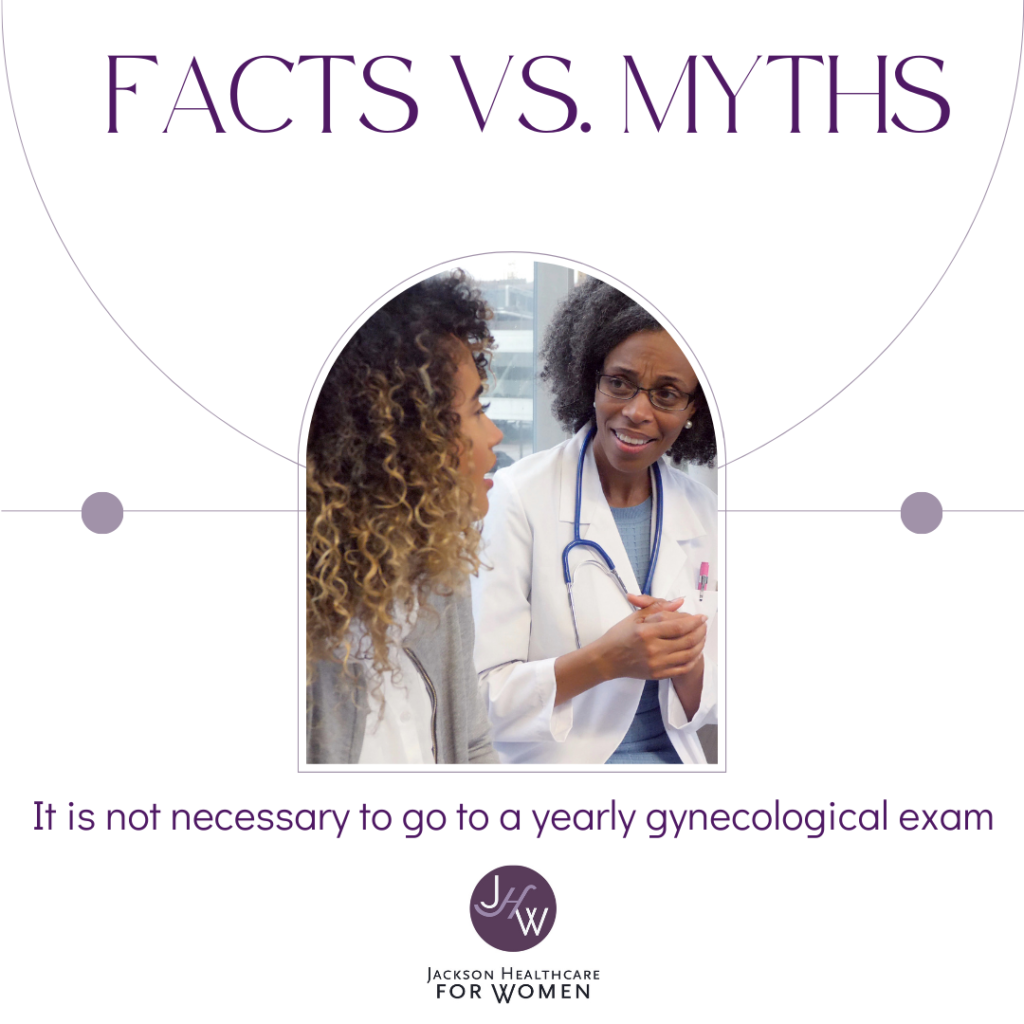Introduction
Women’s annual exams aren’t only inclusive of mammograms and pap smears. They enable your doctor to spot warning signs of disease and cancer before they get too serious. Your doctor will also help you work towards preventing heart disease and stroke by checking your cholesterol levels, blood pressure, and diabetes risk factors. During your annual exam, your doctor will also discuss any vaccinations that may be necessary.
Women’s annual exams are important.
A woman’s wellness visit provides you with an opportunity to discuss any health concerns or questions you may have with your doctor and may help us detect conditions earlier so they can be more effectively treated.
The American College of Obstetricians and Gynecologists (ACOG) recommends that women have a pelvic exam every year as part of their routine medical care. Depending on your age and risk factors, this may include a breast exam and/or mammogram too.
The annual woman’s wellness exam may help detect:
- Cervical cancer – Cervical dysplasia and cancer of the cervix often have no symptoms. When symptoms present themselves, the cancer has already likely spread. The first signs of symptoms may be abnormal bleeding, spotting, or watery discharge from the vagina. Menstrual bleeding may be heavier than usual, and bleeding may occur after sex. Often, these symptoms can be caused by other health problems that are not cancer. However, they are still relevant. According to ACOG, if you have any of these symptoms, you should call your doctor.
- Endometrial cancer – The most common symptom of endometrial cancer is abnormal uterine bleeding.
- Before or during menopause, this includes irregular menstrual bleeding, spotting, and bleeding between menstrual periods.
- After menopause, any bleeding or spotting is abnormal.
Symptoms of advanced endometrial cancer include abdominal or pelvic pain, bloating, feeling full quickly when eating, and changes in bowel or bladder habits.
- Ovarian cancer (in women who have never had children) – If you have any of the following symptoms, especially if you have them for more than 12 days per month, contact your ob/gyn:
- Bloating or an increase in abdominal size
- Pelvic or abdominal pain
- Difficulty eating or feeling full quickly.
- Urinary symptoms (frequency and urgency)
Other symptoms can include vaginal bleeding, especially after menopause, and a change in bowel habits. Having these symptoms does not mean that you have ovarian cancer, but it is a good idea to find out what is causing them.
Be alert to any changes in your body and discuss them with your doctor. The earlier that ovarian cancer is diagnosed, the more likely that treatment will be successful.
- Breast cancer – Lumps in the breast or surrounding areas are the most common, noticeable symptoms of breast cancer, but additional symptoms may also include:
- Swelling of part or all of the breast
- Skin dimpling or puckering, including an orange-peel appearance.
- Breast or nipple pain
- A nipple that turns inward
- Red, dry, flaking, or thickened breast skin or nipple
- Nipple discharge that is not breast milk, with or without bleeding.
- Swollen lymph nodes under the arm or around the collar bone
- Colon cancer (rectal and colon)
- Heart disease and stroke risk factors – Heart disease, which includes coronary heart disease, congestive heart failure and angina (chest pain), affects approximately 1 in 3 women. Stroke is the third leading cause of death among women and accounts for one out of every 17 deaths each year–more than all forms of cancer combined. There are no true symptoms of heart attack or stroke, so minimizing your risk through a healthy lifestyle and visiting your ob/gyn for an annual woman’s wellness exam or your primary care provider for a physical, are the best ways to prevent these conditions.
During your annual exam, your doctor will discuss any vaccinations you may need, like flu shots or shingles vaccines.
- Flu shots: The best way to protect yourself from the flu is with a yearly vaccination. The Centers for Disease Control and Prevention recommend that everyone 6 months of age and older get an annual flu shot each fall. This helps keep you healthy during cold season when viruses are most prevalent.
- Shingles vaccines: If you have had chickenpox (varicella) in the past, talk to your doctor about getting vaccinated against shingles (zoster). Shingles is caused by reactivation of varicella-zoster virus (VZV), which causes chickenpox; it’s usually seen 5-10 years after having chickenpox as a child or teen–usually between ages 50-60 years old though it can occur at any age after being exposed to VZV earlier in life.
Your doctor can check for diabetes risk factors during your annual exam.
Diabetes is a disease that causes the body’s blood sugar (glucose) levels to be too high. It can lead to serious complications if it’s not diagnosed and treated early enough.
The following are some of the most common diabetes risk factors:
- high blood pressure (hypertension)
- obesity/being overweight
- high cholesterol levels
- physical inactivity
We can check for diabetes risk factors in your blood as well as by calculating your BMI and looking at other clinical markers.
Jackson Healthcare for Women is Mississippi’s leading provider of healthcare services for women. With 15 physicians on staff, Jackson Healthcare for Women is one of the largest and most respected women’s healthcare clinics in the area.

